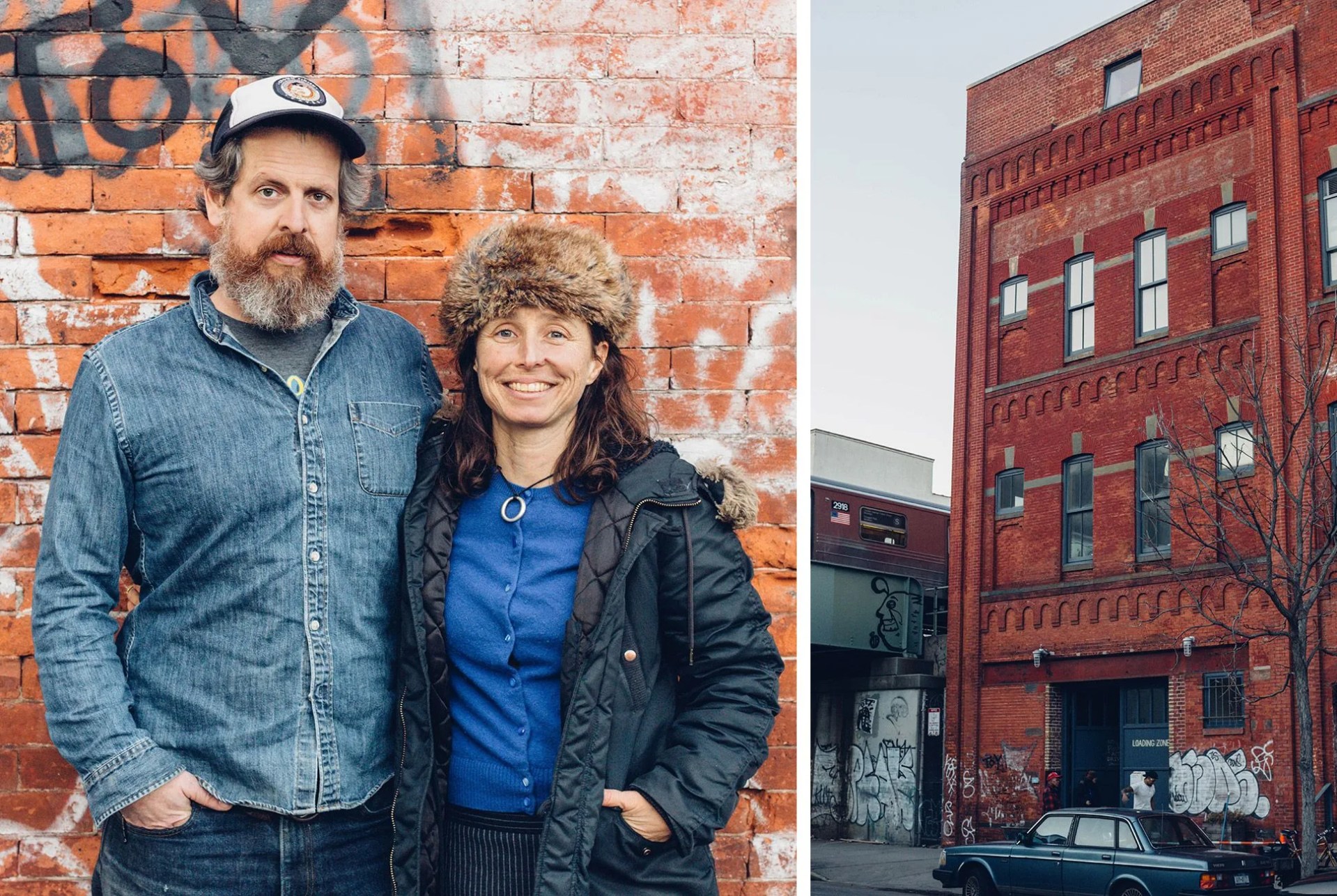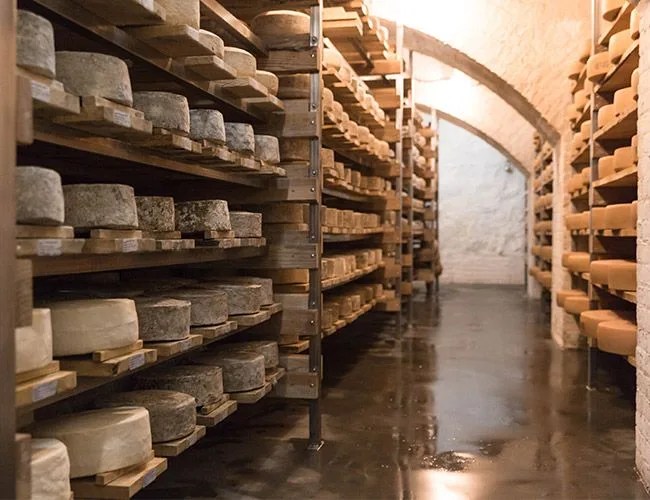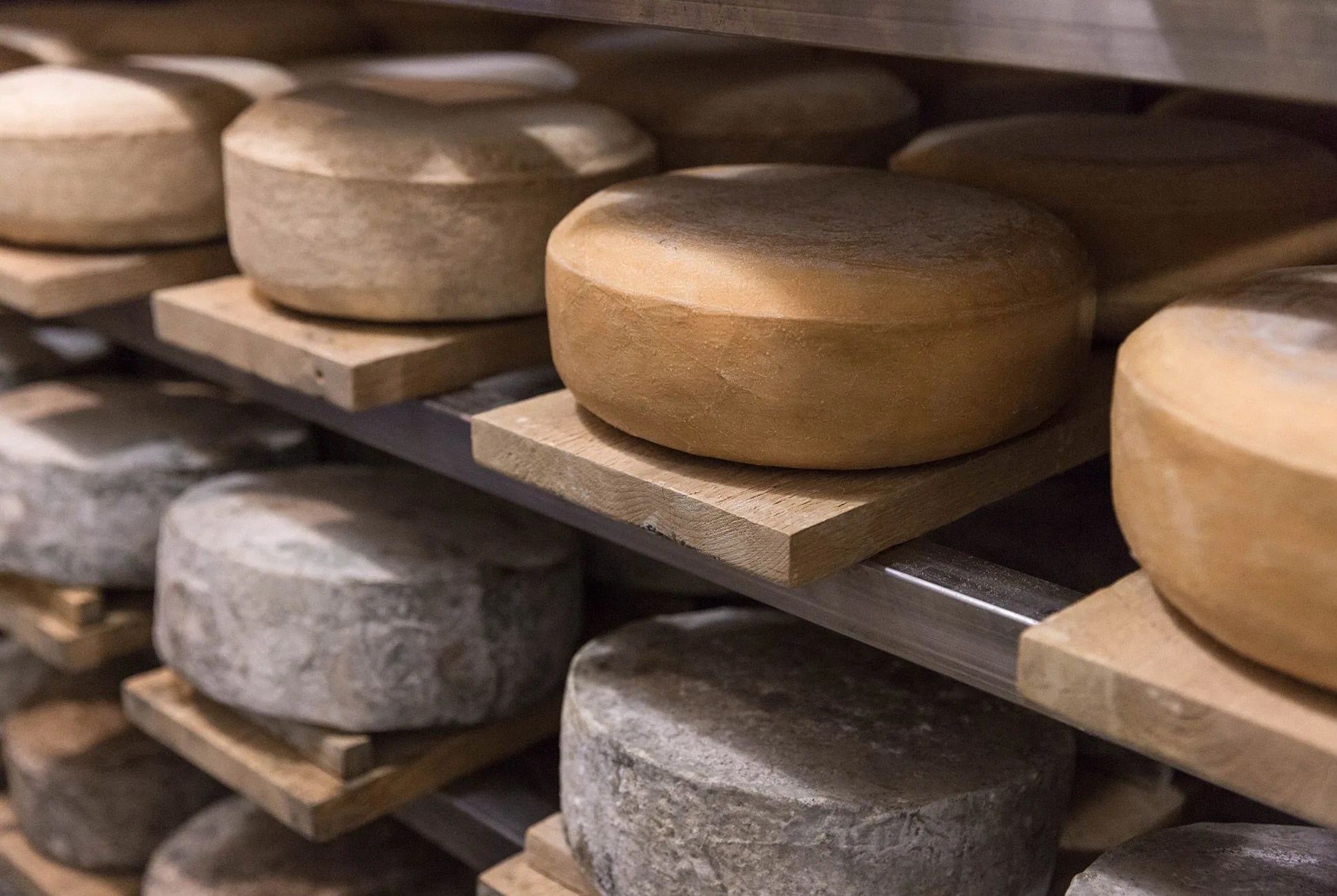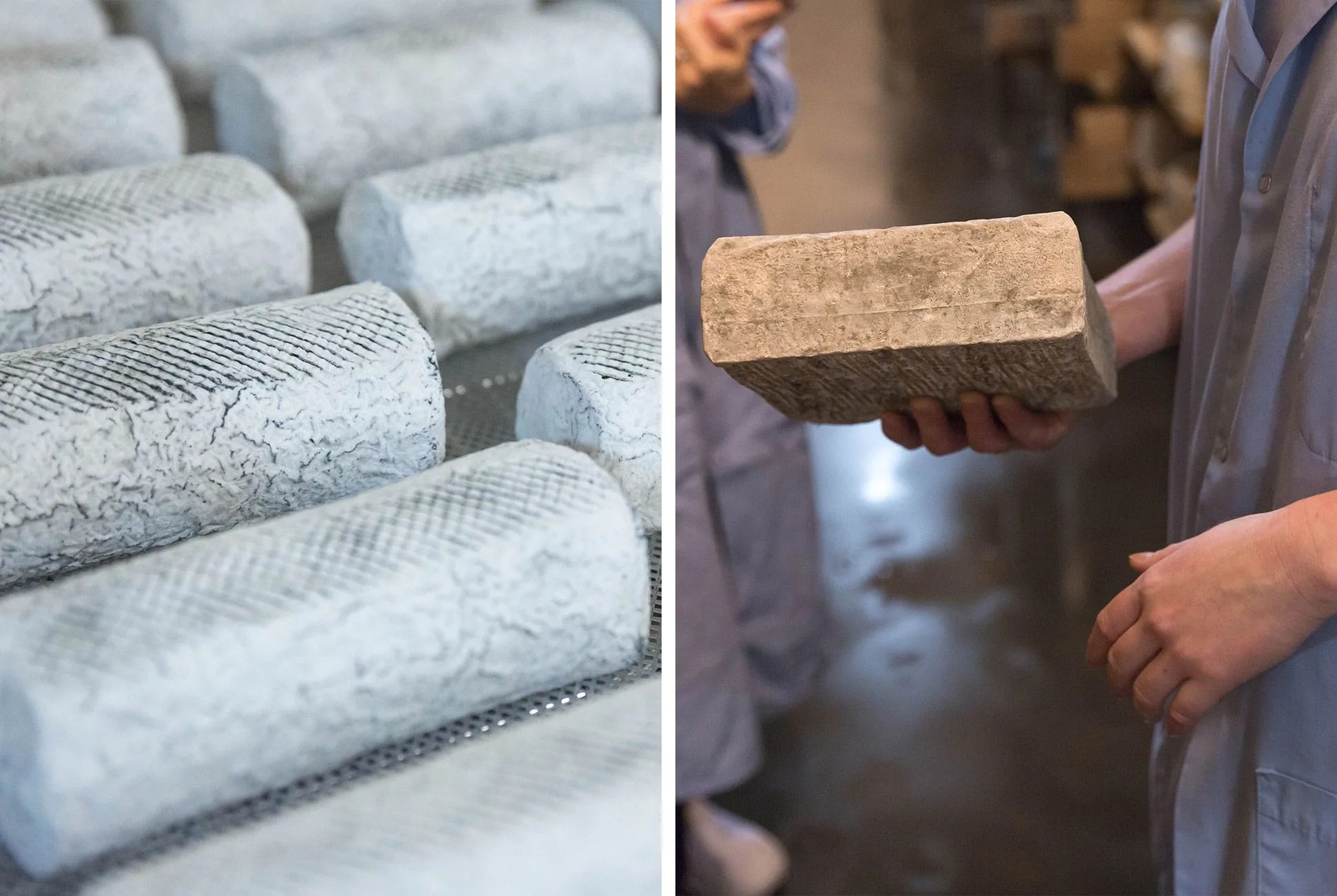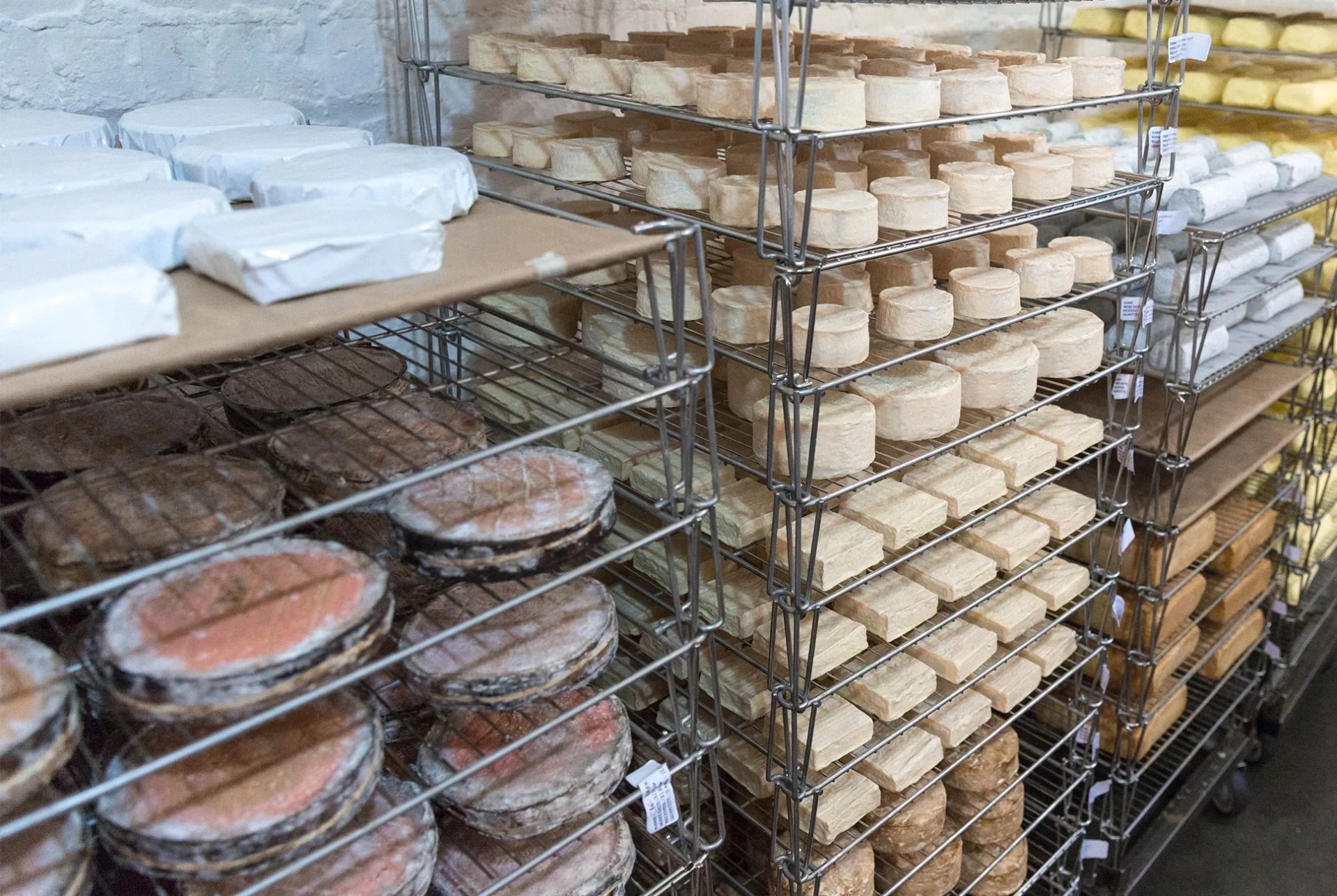3 photos
Thirty feet below street level, in the basement of an Italianate-style red brick building in Crown Heights, Brooklyn, 25,000 pounds of cheese and 300 pounds of butter sit in a climate-controlled room, waiting for nature to take its course. To walk into the cave is to be assaulted by the dank, ammonia-heavy scent of resting cheese. But the nose adjusts quickly and soon the tangy air isn’t so overwhelming, somehow tempered by the mustiness. Kept at a precise 52 degrees Fahrenheit with 93 percent humidity, the space feels — perpetually — like a pre-dawn morning after a night of heavy rain.
This is Crown Finish Caves, one of the few traditional affinage, or cheese-aging, facilities in the United States. “Some might say that we have a lot of existing flora in there, which gives the cheese that comes out of our caves a certain taste,” said Benton Brown, a local sculptor and one of the co-owners here. “That there’s something similar that goes through them, and that’s maybe based on our terroir.”
In the basement of the building sit four, 70-foot-long caverns. One hundred fifty years ago, they served as lagering tunnels for the Nassau Brewery.
In the basement of the building sit four, 70-foot-long caverns with low, vaulted ceilings. Fragments of a stone foundation are visible against the brick walls. One hundred fifty years ago, they served as lagering tunnels for the Nassau Brewery (and its predecessors, the Bedford Brewery and Liberger and Walter Brewing Company), where barrels of bottom-fermenting beer would be left to age for several months. After the Nassau Brewery closed in 1914, the building complex was acquired by the H.J. Heinz Company, the tunnels used for storage. By the time Brown and his wife, Susan Boyle, an environmentalist, purchased the building, it was mostly empty, under the ownership of a moving company.
“We were just looking for a property that we could develop and have rentals and ended up with this one.” Brown said. The couple converted the brewery’s former ice house into residential units in 2001, followed soon after by commercial development in 2005. “After we did that, we were working our way down and the tunnels were the last piece of the puzzle.”
